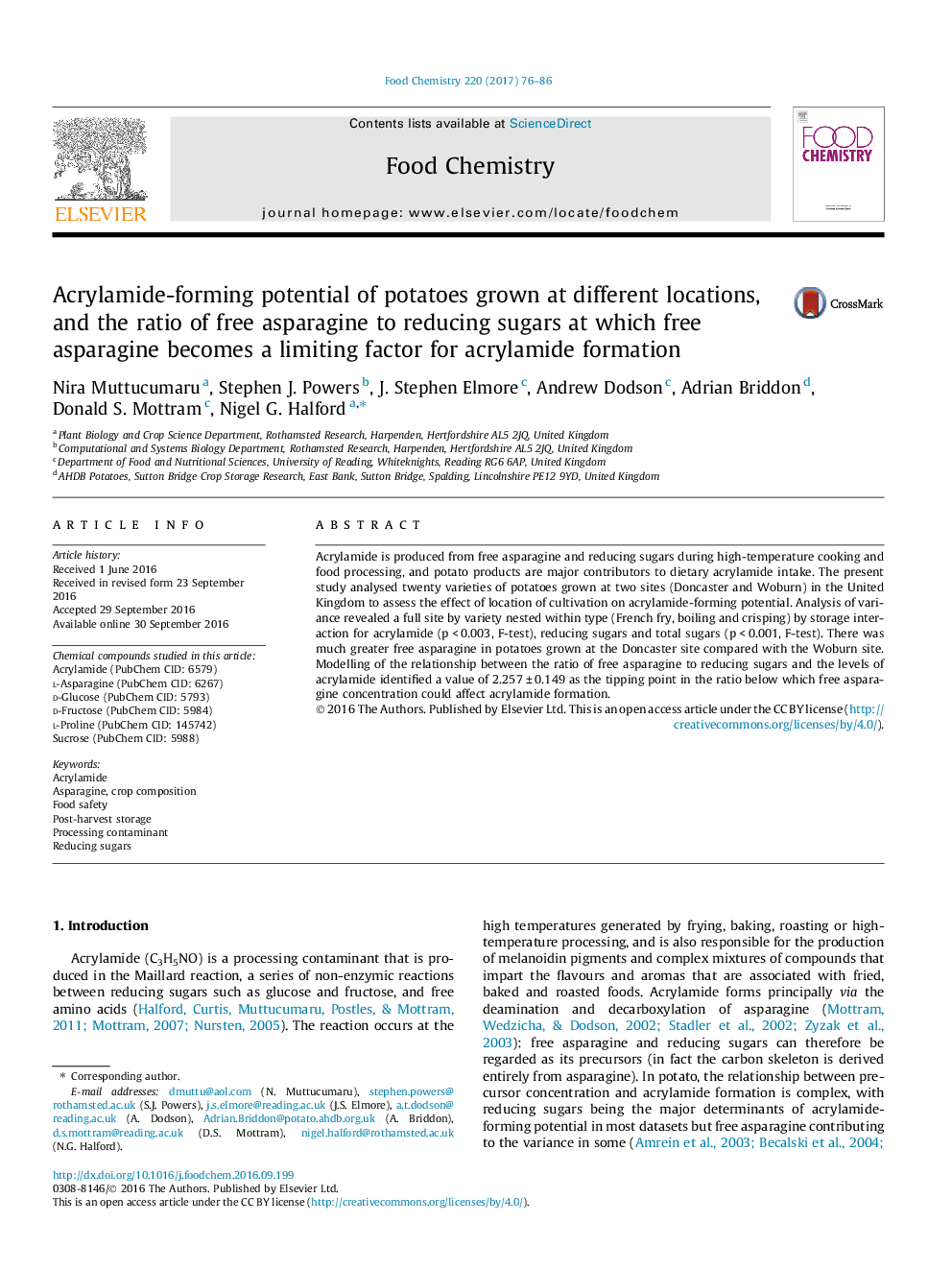| Article ID | Journal | Published Year | Pages | File Type |
|---|---|---|---|---|
| 5133951 | Food Chemistry | 2017 | 11 Pages |
â¢Location of cultivation affects potato composition and acrylamide-forming potential.â¢Effects of variety and storage interact with those of location.â¢Dramatic differences in free asparagine concentration in potatoes grown at two sites.â¢Concentration of reducing sugars is the primary determinant of acrylamide formation.â¢Ratio of free asparagine to reducing sugars determines whether free asparagine affects acrylamide formation.
Acrylamide is produced from free asparagine and reducing sugars during high-temperature cooking and food processing, and potato products are major contributors to dietary acrylamide intake. The present study analysed twenty varieties of potatoes grown at two sites (Doncaster and Woburn) in the United Kingdom to assess the effect of location of cultivation on acrylamide-forming potential. Analysis of variance revealed a full site by variety nested within type (French fry, boiling and crisping) by storage interaction for acrylamide (p < 0.003, F-test), reducing sugars and total sugars (p < 0.001, F-test). There was much greater free asparagine in potatoes grown at the Doncaster site compared with the Woburn site. Modelling of the relationship between the ratio of free asparagine to reducing sugars and the levels of acrylamide identified a value of 2.257 ± 0.149 as the tipping point in the ratio below which free asparagine concentration could affect acrylamide formation.
